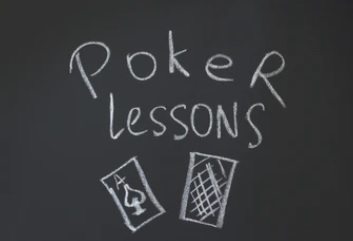This is the second in a series for beginning and intermediate players on building a practical understanding of game theory as regards poker. In our first edition of this series (link), we looked at how attack and defense correspond to exploitation and protecting yourself from exploitation with more balanced play. Since the goal of this series is to give you ideas that you can put into use, we’re going to go right into the meat of the matter with pre-flop ideas for your own play. We’re going to look in detail at a couple of scenarios that new players consistently have trouble with: blind stealing and 3-betting before the flop.
Stealing Blinds Understood the Game Theory Way
It folds around to the button in a 100bb no-limit hold’em game. He raises to 3bb against a couple of fairly tight players who are both regulars in the games he plays, and the action begins.
Our Hero in the button expects the SB to fold about 85 percent of the time, and he expects the BB to fold about 80 percent of the time, on average. This means that, again on average, Hero will take down the blinds roughly 68 percent of the time. But guess what? He only needs them to fold two-thirds of the time, or about 67 percent, for his raise to immediately be profitable.
Here we have established a situation where our opponents have a glaring weakness, and we need to decide how to take advantage of it. If the blinds would never adjust, then our Hero in the button could make a ton of money by just raising with any two cards here, always folding bluffs to 3-bets, and only playing fairly strong hands when he sees a flop.
However, if we start raising 100 percent of the time in the button, one of them is likely to figure out what’s going on and start being less agreeable to our raises. That could happen not only on this table, but on others. Having them adjust could cost us a lot of money in the long run. So instead, the button should adjust in a more moderate way by expanding his raising range to include more hands than he would normally have, but not such an overwhelming majority of hands that it becomes clear what he’s doing.
With all of this having been said, there’s a trap you need to avoid falling into. Once you consciously decide to raise them more, you have to be able to let bad hands go if you end up facing a 3-bet from one of these two players in the blinds. Don’t talk yourself into thinking that they are adjusting to your play by 3-betting more often and that you need to spaz out and spew chips in response.
Facing Aggressive Three-Bets With Game Theory
Sooner or later, you’re going to run into someone on your left who is trying to get super fancy with their three-bets, and you’re going to need to know how to handle that situation. Here we’re going to offer some ideas based on what we discussed last week regarding weaknesses, attack and defense.
There are two weaknesses at work when you’re facing aggressive 3-bets. The first weakness is your own, and that’s the weakness of your fold frequency being taken advantage of. The second weakness is of your opponent’s 3-betting range and if his or her fold rate to four-bets can be taken advantage of. Both of these needs to be dealt with properly when you get into this type of situation.
Suppose you’re raising to 3bb in MP and are facing a 10bb from a player in LP. Your opponent needs to take it down about 68-69 percent of the time for a pure bluff to be profitable, and since the blinds and other players left in the hand are going to wake up with a big pair some small percentage of the time, he probably needs you to fold about 70 percent of the time or so when it gets folded around to you.
Playing Defense
If you’re in a situation where you’re folding 70-80 percent, then you have an important weakness that’s being attacked, and it’s time to play some defense. There are two ways to go about this: One way is obvious, and the other way is not so obvious. The first way to address your weakness is to simply decrease your bet size to something like 2.5bb. This is a bit of an over-rated approach because it gives away your adjustment right away and makes it hard to attack your opponent’s weaknesses.
The second way to cover up your weakness is to open raise less often while that player is on your left. If you’re opening 20 percent of hands and drop down to just 17.5 percent of hands instead, then you have decreased your fold percentage by a whooping 12.5 percent. You do this by open folding the worst 2.5 percent of your hands. This by itself can make your weakness go away, and it’s much more effective than changing your bet size.
Going on the Attack
Next up, you have the option to try to go after any weaknesses that he’s creating by 3-betting more often. You do this by increasing your 4-bet bluffing some small amount. Note that this will also slightly decrease your fold percentage if you are doing it with hands that you would have otherwise folded. In this case, attack and defense go hand-in-hand as it often does when you’re dealing with game theory.
Just remember to be moderate with your adjustment here as well. Don’t get too crazy by 4-betting some huge amount of the time. Instead, change things up enough to exploit him without immediately giving away what you’re doing. This measured approach will help you to milk your opponent over time, and it will earn you more money in the long run.
Submit your review | |








